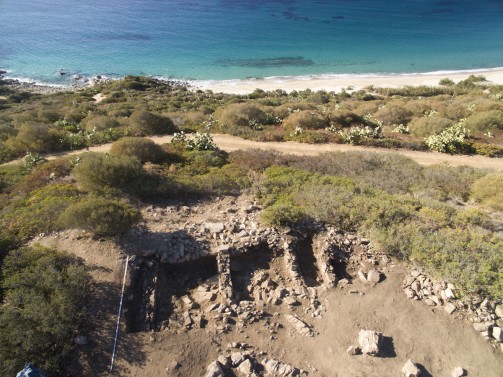The site of Is Cuccureddus, which stands on a hill about 50 m above sea level, housed the structures of a fondaco and a sanctuary active from at least the second half of the seventh century B.C. in direct connection with the port call located at the mouth of the Rio Foxi. The site was reached by a path-stairway carved along the southern side of the hill. The first investigations at the site began in the 1980s through the excavation of some service rooms of a shrine dedicated to a female deity, identified with the Phoenician goddess Astarte and the later Roman Iuno. The material culture finds unearthed would seem to confirm, in the wake of a long literary tradition, the practice of sacred prostitution, documented for numerous shrines dedicated to Astarte and scattered between East and West, from Cyprus and Kithera to Sicily and Sardinia. In the still visible rooms of this building, numerous containers of perfumed ointments and balms (aryballoi and alabastra of Greek production), terracottas representing anatomical details such as female breasts and a gargoyle depicting a male sex organ have been found. Particularly recognizable in the southern sector of the high ground are four rectangular rooms aligned with each other, built with unsquared stones of various sizes and arranged in a northeast/southwest direction. According to the most accredited historical reconstructions, around 540 BC. Cuccureddus was the victim of an aggression by Carthaginian armies, resulting in a widespread fire that devastated the settlement, which was abandoned and not inhabited again until the Roman conquest of Sardinia. The traces of the aggression, which are particularly evident archaeologically, demonstrate the sudden and abrupt interruption of life in the levels relating to the second half of the 6th century BC. During the Roman period, the area was stably reoccupied and the place of worship was re-functionalized, again in relation to a female deity. After 30 years, in 2017, archaeological excavation work resumed thanks to municipal funding and in collaboration with the University of Sassari.









